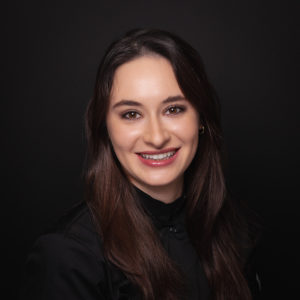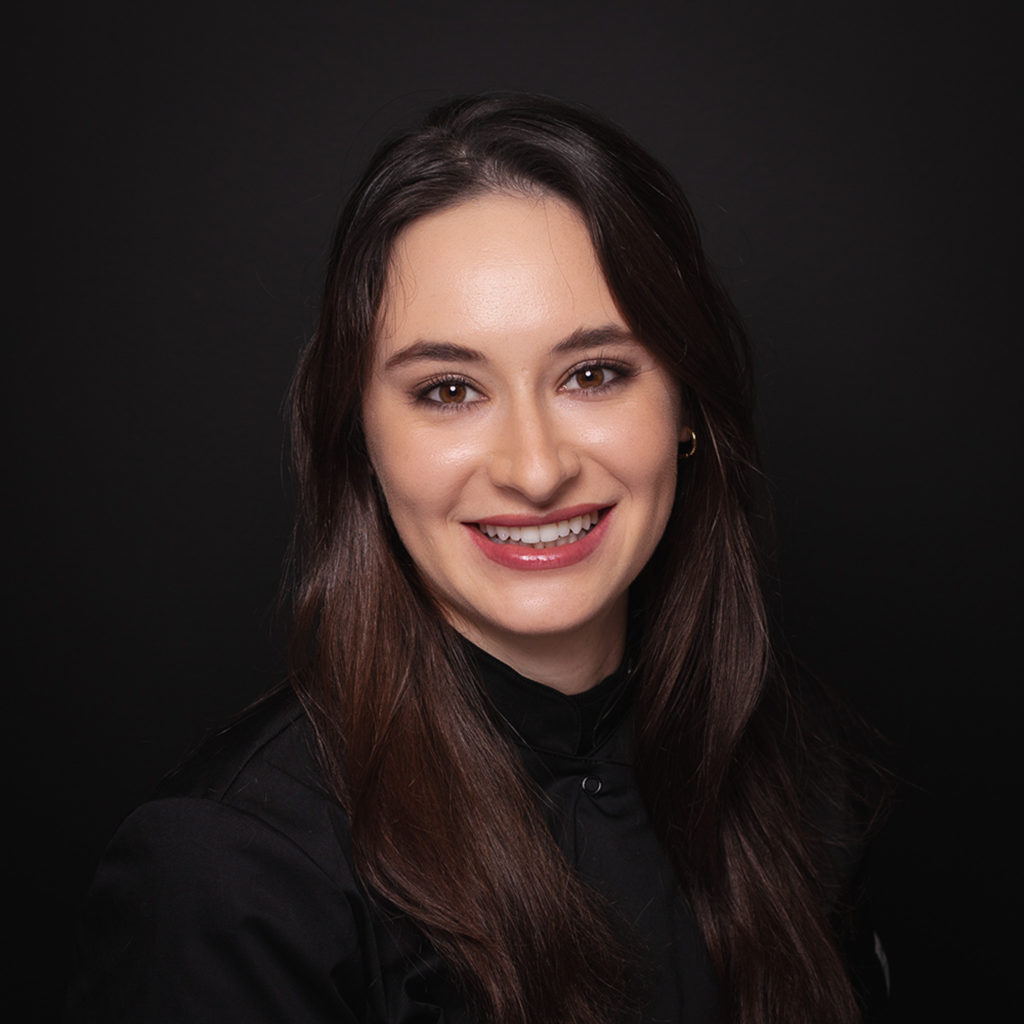Aparat ortodontyczny ruchomy – jak działa, ile kosztuje, czy jest skuteczny?
Aparat ortodontyczny ruchomy to często stosowana metoda korekcji wad zgryzu u dzieci i młodzieży. Ten zdejmowany aparat, zakładany na łuki zębowe, stopniowo koryguje nieprawidłowe ułożenie zębów. Przeczytaj, jak dokładnie działa, ile kosztuje i czy jest skuteczny. Zasada działania aparatu ortodontycznego ruchomego Aparat ortodontyczny ruchomy działa na zasadzie wywierania kontrolowanego nacisku na wybrane zęby, co powoduje […]
CZYTAJ WIĘCEJ »
Aparat estetyczny – czym jest, ile kosztuje, jakie są rodzaje aparatów estetycznych?
Aparat estetyczny to nowoczesne rozwiązanie w ortodoncji, które pozwala na dyskretne leczenie wad zgryzu. W przeciwieństwie do tradycyjnych aparatów metalowych są mniej widoczne na zębach. Poznaj rodzaje aparatów estetycznych i dowiedz się, ile kosztuje leczenie tą metodą. Czym jest aparat estetyczny? Aparat estetyczny to rodzaj aparatu ortodontycznego, który służy do korygowania wad zgryzu i nieprawidłowego […]
CZYTAJ WIĘCEJ »
Aparat retencyjny – czym jest, jak długo nosi się retainer?
Aparat retencyjny to urządzenie ortodontyczne stosowane po zakończeniu aktywnego leczenia wad zgryzu. Jego zadaniem jest utrzymanie zębów w skorygowanej pozycji. Retainery mogą mieć formę ruchomą lub stałą, a czas ich noszenia zależy od indywidualnych potrzeb pacjenta. Czym jest aparat retencyjny i jakie ma zadanie? Aparat retencyjny to rodzaj aparatu ortodontycznego, który zakłada się po zakończeniu […]
CZYTAJ WIĘCEJ »
Aparat samoligaturujący – czym jest, czym różni się od aparatu klasycznego?
Wady zgryzu to nie tylko problem estetyczny, ale także medyczny. Mogą powodować powstawanie próchnicy, utrudniać jedzenie czy pogłębiać wady wymowy.
CZYTAJ WIĘCEJ »
Ile kosztuje aparat ortodontyczny na zęby 2024?
Ile kosztuje aparat na zęby w 2024 roku? Cena zależy od wielu czynników, takich jak rodzaj aparatu, czas trwania leczenia i liczba wizyt kontrolnych. Decydując się na leczenie ortodontyczne, warto poznać wszystkie koszty związane z noszeniem aparatu na zęby. Ile kosztuje aparat na zęby? Rodzaje aparatów a ich ceny Osoby, które chcą poprawić estetykę uśmiechu, […]
CZYTAJ WIĘCEJ »
Aparat ortodontyczny – rodzaje, ceny, co warto wiedzieć przed założeniem?
Aparat ortodontyczny to rozwiązanie, które pomaga w korekcji nieprawidłowości zębowych i wad zgryzu. Przed podjęciem decyzji o leczeniu ortodontycznym warto poznać dostępne rodzaje aparatów, ich działanie oraz koszty. W artykule przedstawiamy najważniejsze informacje. Jak działa aparat ortodontyczny? Aparat ortodontyczny jest stosowany w ortodoncji do korygowania wad zgryzu i nieprawidłowości w ustawieniu uzębienia. Jego głównym zadaniem […]
CZYTAJ WIĘCEJ »
Jak wygląda aparat ruchomy dla dzieci?
Zastanawiasz się, jak wygląda aparat ruchomy dla dzieci? To elastyczne rozwiązanie w korygowaniu ustawienia zębów najmłodszych pacjentów ortodontycznych. Jest dyskretny i łatwy w użytkowaniu, co sprawia, że cieszy się popularnością. Wyjaśniamy, jak wygląda aparat ruchomy dla dzieci Jak wyglądają aparaty ruchome dla dzieci? Zostały specjalnie zaprojektowane, by poprawiać ustawienie zębów oraz wady zgryzu u dzieci. […]
CZYTAJ WIĘCEJ »
Invisalign – co to? Sposób na proste zęby i zdrowy uśmiech
W ostatnich latach ortodoncja przeszła prawdziwą rewolucję, na której czele stoi Invisalign – metoda, która ma na celu prostowanie zębów bez konieczności noszenia metalowych aparatów. Przeczytaj, co to Invisalign i jak może wpłynąć na twój uśmiech. Invisalign – co to za metoda? Invisalign to innowacyjna metoda korygowania zgryzu polegająca na stosowaniu przezroczystych, plastikowych nakładek, znanych […]
CZYTAJ WIĘCEJ »
Ile najkrócej nosi się aparat ortodontyczny?
Ile najkrócej nosi się aparat ortodontyczny? To pytanie, które zastanawia pacjentów rozpoczynających leczenie ortodontyczne. Wiele zależy od indywidualnych czynników, a także zastosowanych metod. Co wpływa na czas leczenia ortodontycznego? Leczenie ortodontyczne to proces, który wymaga czasu i cierpliwości. Czas noszenia aparatu różni się w zależności od indywidualnych czynników, w tym od rodzaju wady zgryzu i […]
CZYTAJ WIĘCEJ »
Jak działa aparat ortodontyczny? Jak działa aparat ortodontyczny? Odpowiedzi na to pytanie szukają osoby, które chcą poprawić estetykę swojego uśmiechu. W artykule wyjaśniamy, jakich efektów można się spodziewać po zastosowaniu go w leczeniu i czy warto się na niego zdecydować. Jak działa aparat ortodontyczny? Najważniejsze informacje Aparaty ortodontyczne to narzędzia służące do korygowania nieprawidłowości w […]
CZYTAJ WIĘCEJ »
Aparat Bioblok – co to? Jak działa?
Aparat Bioblok stosowany jest w ortotropii. Ta metoda leczenia skupia się na zapewnieniu prawidłowego rozwoju twarzy, zamiast koncentrować się wyłącznie na prostowaniu zębów, jak ma to miejsce w tradycyjnej ortodoncji. Zobacz, jak działa Bioblok! Zapamiętaj! Czym jest aparat Bioblok? Bioblok jest aparatem ortopedycznym, który wpływa na rozwój szczęk poprzez stymulowanie wzrostu szczęki i żuchwy, a […]
CZYTAJ WIĘCEJ »
Bioblok (aparat – cena, konstrukcja, przeznaczenie
Zastanawiasz się, ile kosztuje Bioblok? Cena aparatu nie jest niska i może różnić się w zależności od kliniki, w której podejmiesz leczenie. Warto jednak pamiętać, że aparat ma służyć przez dłuższy czas, a terapia pomaga zapobiec poważnym kłopotom zdrowotnym. Zapamiętaj! Czym jest aparat Bioblok? Aparaty Bioblok stosowane są w ortotropii. Ta, jako gałąź stomatologii i […]
CZYTAJ WIĘCEJ »
Ortotropia Kraków – jak przebiega leczenie metodą ortotropii?
Jedną z metod leczenia wad zgryzu jest ortotropia. W Krakowie, gdzie prowadzimy działalność, bez trudu uzyskasz pomoc specjalisty. Kiedy się do niego zgłosić? Przeczytaj, komu potrzebna jest ortotropia. Zapamiętaj! Czym jest ortotropia? Ortotropia to wczesne ortodontyczne leczenie dzieci. Głównym zadaniem tej dziedziny ortodoncji jest korygowanie wady zgryzu. Z problemem walczy się nie tylko poprzez noszenie […]
CZYTAJ WIĘCEJ »
Aparat ortodontyczny treningowy w leczeniu ortotropowym
Aparat ortodontyczny treningowy stosowany w ortotropii jest specjalnym urządzeniem używanym w leczeniu wad zgryzu. Ortotropia to technika w ortodoncji, która skupia się na równoczesnym kształtowaniu zarówno zgryzu, jak i struktury twarzy pacjenta. Jak działa aparat? Zapamiętaj! Aparat ortodontyczny treningowy – czym jest? Czym jest aparat ortodontyczny treningowy? Jest to specjalny aparat Bioblok 3, który stosowany […]
CZYTAJ WIĘCEJ »
Ortotropia – opinie. Czy warto skorzystać z tej metody?
Jedną z technik ortodontycznych jest ortotropia. Opinie o tej metodzie leczenia zgryzu są jednoznaczne – pomaga ona przechwycić wadę w początkowej fazie i zahamować deformacje. Przeczytaj, dlaczego warto zdecydować się na terapię! Zapamiętaj! Czym jest ortotropia? Ortotropia, czyli ortodoncja posturalna, jest techniką, która pozwala na wczesnym etapie przechwycić wadę zgryzu i zahamować rozwijającą się deformację. […]
CZYTAJ WIĘCEJ »
Jak ortotropia wpływa na wygląd twarzy?
Ortotropia to dziedzina ortodoncji, leczenie polegające na redukcji wady zgryzu w okresie wzrostu i rozwoju twarzoczaszki. Ortotropia to poprawa estetyki twarzy poprzez modelowanie kości szczęki i żuchwy. Kto może się poddać terapii? Zapamiętaj! Konsekwencje wad zgryzu Wady zgryzu mogą mieć poważne konsekwencje zdrowotne. Są także problemem estetycznym. Do najważniejszych skutków ich nieleczenia należą: Ortotropia twarzy […]
CZYTAJ WIĘCEJ »
Co to jest ortotropia? Kto może skorzystać?
Ortotropia jest leczeniem wad zgryzu u dzieci w okresie wzrostu. To metoda leczenia, która koncentruje się na kierowaniu rozwoju twarzoczaszki tak, aby przebiegał on prawidłowo. Jak wygląda w praktyce? Zapamiętaj! Ortodoncja posturalna ma na celu zidentyfikowanie i korygowanie przyczyn problemów z uzębieniem. Propozycja takiego leczenia jest skierowana do dzieci i młodzieży, ponieważ najlepsze efekty daje […]
CZYTAJ WIĘCEJ »
Aparat Damon – dla kogo będzie odpowiedni?
Krzywe zęby i wady zgryzu wpływają na pewność siebie, ale także postrzeganie przez innych ludzi. Oprócz tego są częstą przyczyną problemów z wymową i jedzeniem.
CZYTAJ WIĘCEJ »
Aparat ruchomy – dla kogo będzie odpowiedni?
Aparat ruchomy służy do korygowania wad zgryzu oraz nieprawidłowego ułożenia zębów. W przeciwieństwie do stałego aparatu ortodontycznego można go samodzielnie zdejmować oraz zakładać.
CZYTAJ WIĘCEJ »
Aparat ceramiczny – kto powinien go założyć?
Aparat ceramiczny stanowi częsty wybór osób, dla których ważne jest nie tylko skuteczne, ale też komfortowe leczenie. Działa na takiej samej zasadzie, jak aparat metalowy.
CZYTAJ WIĘCEJ »
Aparat metalowy i jego zalety
Aparat metalowy należy do tego rodzaju stałych aparatów ortodontycznych, które cieszą się dużym zainteresowaniem pacjentów.
CZYTAJ WIĘCEJ »
Aparat porcelanowy – czym się różni od innych?
Atrybutem pięknego uśmiechu są białe, równe zęby. Nie każdy może się jednak pochwalić idealnym zgryzem, więc odpowiedzią na ten problem jest wizyta w naszym centrum stomatologicznym.
CZYTAJ WIĘCEJ »
Aparat Invisalign – jak wygląda leczenie?
Nasze centrum stomatologiczne oferuje najnowsze metody leczenia ortodontycznego. Jedna z nich polega na zastosowaniu aparatu Invisalign. To nowoczesna, przezroczysta nakładka, która dla osób postronnych czyni aparat niemal niemożliwym do zauważenia.
CZYTAJ WIĘCEJ »
Aparat kryształowy – czym różni się od innych?
Olśniewający uśmiech wymaga przede wszystkim wyprostowania zębów oraz naprawienia wad zgryzu. Można to osiągnąć dzięki aparatom ortodontycznym, dostępnym w naszym centrum stomatologicznym. Częsty wybór pacjentów pada na aparat kryształowy, który spełnia oczekiwania nawet bardzo wymagających osób.
CZYTAJ WIĘCEJ »
Aparat Clear Aligner – zastosowanie i leczenie
W naszym centrum stomatologicznym zapewniamy najnowocześniejsze metody leczenia ortodontycznego. Oferujemy również aparat Clear Aligner, który daje znakomite efekty w korekcji wad zgryzu.
CZYTAJ WIĘCEJ »

